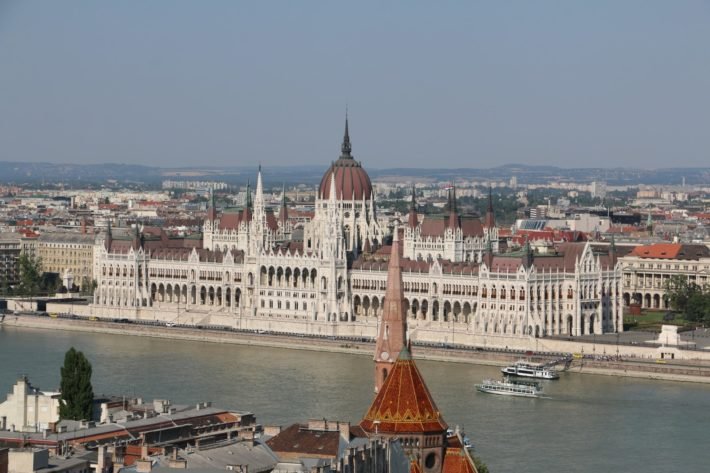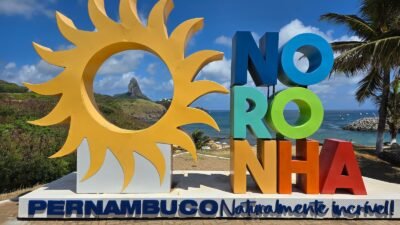Budapest is the capital of Hungary. It was founded in 1873 with the merger of three cities: Buda and Óbuda, on the right bank of the Danube River, and Pest, on the left bank. It is one of the most beautiful and most visited cities in Europe. Besides, the cost of travel in Budapest is much cheaper than in traditional European capitals (London, Paris, Rome).
It is worth spending 4 or 5 days in the city, because Budapest, besides being beautiful, is full of attractions, especially in the Buda region. We spent 3 days there but it was not enough to enjoy everything the city has to offer.
Check out our reports and tips from this incredible tourist destination!
Getting to Budapest from Bratislava
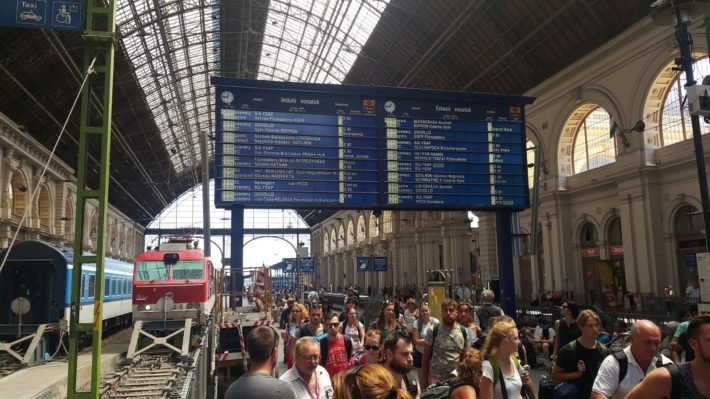
We arrived in Budapest, Hungary, by train from Bratislava, Slovakia. The direct, unconnected train runs from Bratislava Station (Bratislava hlavná Stanica) to Budapest-Keleti Station (East Station) and the journey takes 2h42min.
I was not able to buy the ticket through the Slovakrail.sk website, which at that time only provided information about times, sections, and possible connections. We bought the ticket at the Bratislava train station.
The price was 17.10 Euros for a second-class seat plus 2 Euros for seat reservation.
The train was comfortable but it was delayed a few minutes. What I found really inconvenient was people occupying the reserved seats without worrying about whether they were reserved or not.
Anyway, I think the train is the best option to get to Budapest. BUD airport is a long way from the city center. It takes at least 30 minutes by taxi without traffic.
Our train was the EC 273 Csárdás, which operates between Prague and Budapest, passing through Bratislava. For more information on the train, click here.
Getting Around Budapest by Metro
We arrived in Budapest at 1 pm. The Keleti station was a little far from our hotel, but we just took the M2 metro, got off at the Kossuth Lajos Tér station (next to the Parliament), and walked 600 meters to reach our hotel.
The metro ticket costs 350 HUF and can be purchased at the vending machines at the station but they must be validated at the metro’s entrance.
- Be aware: there were some “strange” people wandering around the lines of the machines. Some asked for money, others hit the machines to see if they could get something out of them.
Hungary’s Currency
Hungary’s currency is not the Euro but the Hungarian Forint (HUF), a non-convertible currency, and not very easy to find outside Europe. Therefore, you will have to change your money when you arrive in the city!
- Tip: Do not change a lot of money at the Keleti station exchange shops. The exchange rate is absurd: extremely disadvantageous for the tourist. The best quote at the time was 1 EUR = 249 HUF, and the quote presented by Google was 1 EUR = 312 HUF!
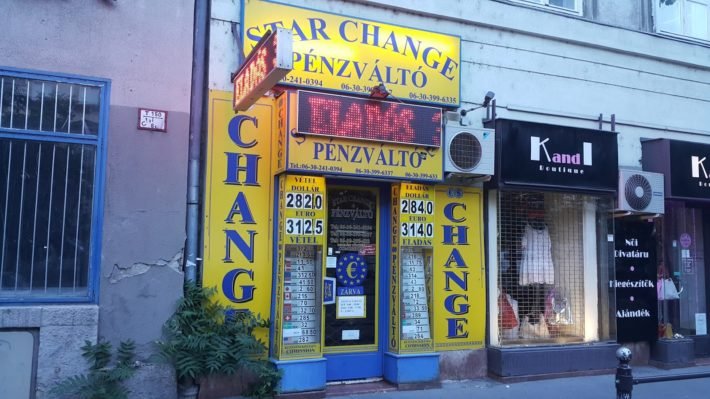
We exchanged money at Star Change, an exchange recommended by our hotel attendant. It’s on Bajcsy-Zsilinszky avenue. There we got a net exchange rate of 1 EUR = 311 HUF. Great!
Where to stay in Budapest?

We stayed at Hotel Parlament. The hotel is very good! It is a 4-star hotel, with a clean and comfortable room, good breakfast, and free wifi. It’s very well located, 600 meters from a metro station, the Hungarian Parliament, and the Danube River. It is also located close to the Budapest-Nyugati station. There is a supermarket, pharmacy, shopping center, and restaurants very close to the hotel for the convenience of the guest.
The attendants are friendly and helpful. One of them gave a lot of information about the stores, attractions, and about where to change money. There is also a spa at the hotel, but it’s small, just a bathtub, and when I thought about going there, a couple already occupied it, which, so to speak, made my entry unfeasible.
Up to 2 pm guests have complimentary coffee and water in the hotel lobby.
We paid 287 Euros for 3 nights for a double room with breakfast.
Day 1
St. Stephen’s Basilica

Our first activity in Budapest was to visit St. Stephen’s Basilica (Szent István Basilika), which is also located on Bajcsy-Zsilinszky Avenue, next to the metro station of the same name.
The Basilica is huge. It’s one of the tallest buildings in Budapest. It is beautiful, both inside and out. Definitely, a must-visit for tourists.
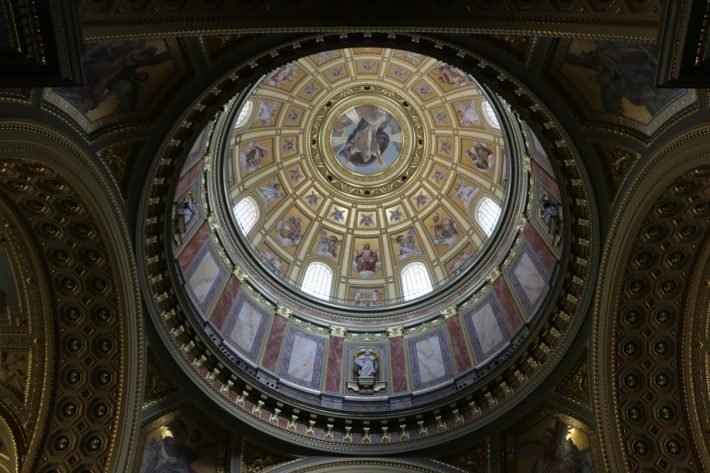
It’s a Roman Catholic basilica, which began to be built in 1851 and was not finished until 1905. It was named in honor of King St. Stephen (975-1038), the first King of Hungary.
The basilica is full of stained glass, works of art, and statues. In addition to visiting the lounge, it is possible to go to the top of the elevator building for an observation deck, but you must pay to go up.

Hungarian Parliament

From there, we walked to the Parliament building. Undoubtedly, the Hungarian parliament is the main tourist attraction in Budapest, Hungary.
It was built in Pest in the late 19th century. The building is eye-catching to all city visitors.

The visitor center is on the northern side of the Building. The tours are guided and are available in several languages: English, Hungarian, French, Hebrew, German, Russian, Italian, and Spanish. Our visit, in Spanish, was scheduled for 4 pm.
- Buy the tickets in advance. It is possible to buy locally or online (click here).
The visit lasts 50 minutes and covers the beautiful halls, lobbies, and stairs of the building. The stairs’ ceiling and walls, which are all covered with gold leaf, caught my attention.

It is possible to take photos during the visit, except in the dome hall, which is in the center of the building, where the crown of King Saint Stephen is guarded by soldiers.
The building houses the Hungarian National Assembly, a unicameral parliament composed of 199 members elected for a 4-year term. The building is symmetrical, since, at the time of its construction, the parliament was bicameral (two chambers: lower chamber and upper chamber).
In summary, the parliament is magnificent. It is also worth watching it at night all lit up, in the Buda region, across the Danube River. It is so beautiful inside and out, which justifies being the No. 1 attraction according to Tripadvisor.
Il Pastaio Restaurant

In the evening, we went to dinner at Il Pastaio, an Italian restaurant, in central Budapest (District V), in the square where the Milály Vörösmarty statue is located. I ended up eating a pizza and drink a glass of wine. Both were excellent! I really liked the service and the staff could speak Italian.
Comme Che Soi
In fact, we wanted to have dinner at Comme Che Soi, which is the best restaurant in Budapest, according to Tripadvisor, but unfortunately, it was not possible.
The restaurant is highly rated and the comments are positive. But, it’s necessary to book in advance. To give you an idea, when we asked the mâitre for a reservation, he said he only had a place for the next week. Unviable for those who would only stay 3 days in the city.
Anyway, the food seemed to be very good. If you are visiting Budapest, be sure to book it well in advance.
A walk along the banks of the Danube River

And we finished the night off by walking on the other side of the Danube River, in Buda, where we could take night photos of the Széchenyi Lánchíd Bridge and of the Hungarian Parliament.
Day 2
On the second day, just after breakfast, we went to Buda. Buda is the western part of Budapest located on the right bank of the River Danube.
Unlike Pest, which is a flat region, Buda is full of hills but it’s where you find most of the city’s main attractions, such as the Buda Castle, the Citadel, the Fisherman’s Bastion, and the Matias Church.
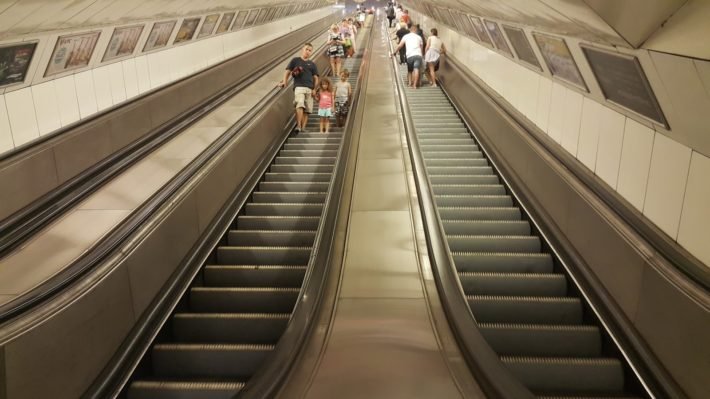
We took the M2 metro line at the Kossuth Lajos Tér station and went to Déli Pályaudvar. This seemed to be the most convenient way to explore Buda. From the map, we thought we wouldn’t have to go up the hills of Buda to get to the attractions.
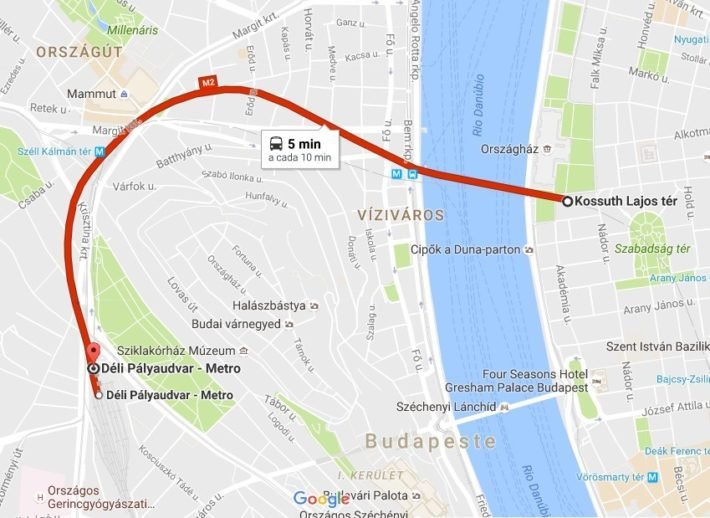
My mistake! We just reached the other side of the hill. Still, unless we had taken a taxi or uber, it was the most convenient way to get to the attractions.
Hospital in the Rock – Nuclear Bunker

Soon after we crossed Vérmezö Park, we started to climb the stairs. We went up two flights of stairs until we reached the Hospital in the Rock – Nuclear Bunker.
This discovery was worth it: the hospital is simply amazing! Be sure to include this attraction in your itineraries!
The visit is guided. The complete tours last about one hour and cover World War II hospital and the nuclear bunker created at cold war times. Unfortunately, it’s not possible to take pictures during the visit. The internal temperature is approximately 15°C, so it is highly recommended to bring warm clothing or take the blankets that are lent to visitors free of charge.
- The hospital was built in the 1930s, taking advantage of the natural caves located below the Castle. The system of natural caves was reinforced and converted into a refuge against air attacks at the beginning of World War II. Only later it became a middle aid post and a hospital for surgical emergencies.

Its use as a hospital was more intense during the Siege of Budapest (1944-1945). The hospital, sized for 60-70 patients, had up to 600 wounded soldiers. There was a shortage of medicines, food, water in certain periods and it’s interesting to see the effort of doctors and nurses to try to get around this problem.
There were reports that doctors/nurses left the underground hospital to collect snow outside and make water. Supplies were reused that were taken from dead patients and sterilized for use in new patients.
After World War II, the hospital was used again only during the 1956 Hungarian Revolution: a popular revolt against the policies of the Hungarian People’s Republic and the Soviet Union. During this period, revolutionaries, civilians, and victims of Soviet troops were all treated at the hospital.
From 1960, at the height of the Cold War, the hospital was expanded to become Hungary’s only secret nuclear bunker. I’m glad it didn’t have to be used for this function!
The visitor will be able to see the equipment, instruments, beds, surgical centers, all original, and some can still be used. Too bad it is not possible to take pictures inside.
Military History Museum

After the Hospital in the Rock, we went to visit the Military History Museum.
It’s a large museum that displays clothes, weapons, uniforms, and exhibitions related to the country’s military history. There was even a specific exhibition on Hungary’s participation in World War I (1914-1919).
Unfortunately, almost all the information was exclusively in Hungarian, very little in English, which makes it a little uninteresting for foreigners. For Hungarians, I imagine it must be exceptional!
Tower of the Church of Mary Magdalene

We left the museum, passed the Tower of the Church of Mary Magdalene. The Franciscan church was built in the 13th century but was severely destroyed in World War II. Only the tower has been restored.
- The tower is visible from below in the Vérmezö Park.
Fisherman’s Bastion
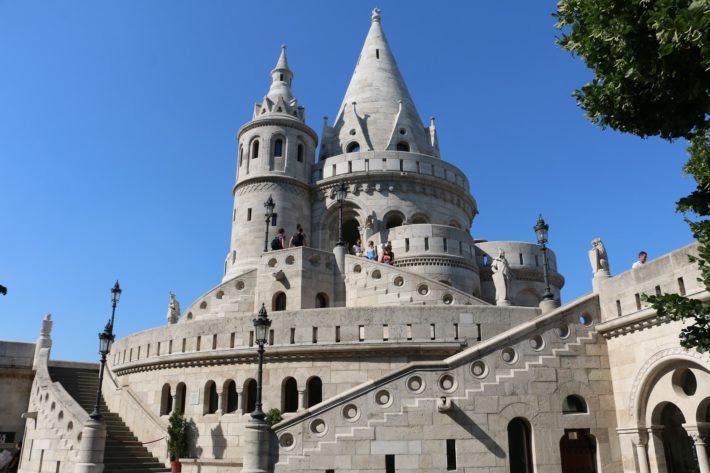
The Fisherman’s Bastion (Halaszbastya) is a terrace located in Buda that offers a panoramic view of the city, including the Danube River, its bridges, and the Hungarian Parliament. It is considered one of the main attractions of Budapest according to Tripadvisor.
In the Middle Ages, the region below the Bastion was inhabited by fishermen, who sold the fishery product in the square in front of the Matias Church. The fishermen’s alliance was responsible for defending the walls that were in the place of the current viewing towers.

The current structure was built in the 19th century (1895-1902) to commemorate the 1000th anniversary of the founding of the Hungarian state. The 7 towers honor the 7 leaders of the tribes who founded Hungary in 895 DC. On the terrace, there is also a restaurant.
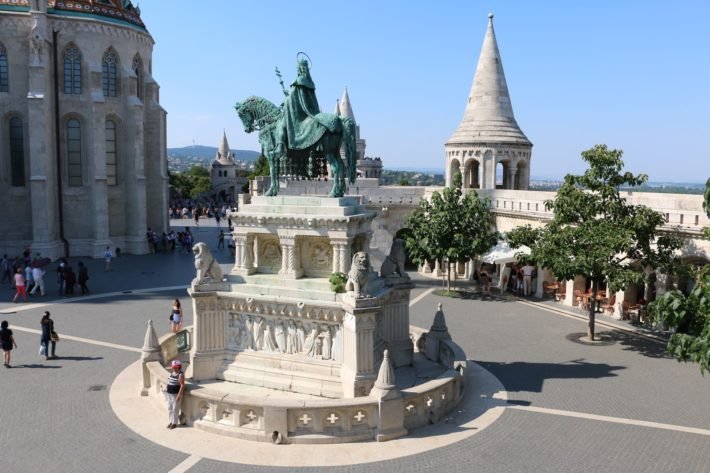
The Bastion is next to Matias Church. The Church, the Church Tower, and the Fisherman’s Bastion are open for visitors. Tickets are sold at a ticket window in front of the attractions.
In front of the church, there’s a statue of King Saint Stephen, who was the first King of Hungary, as we said earlier.
But we decided to visit only the Fisherman’s Bastion.
Széchenyi Lánchíd Bridge
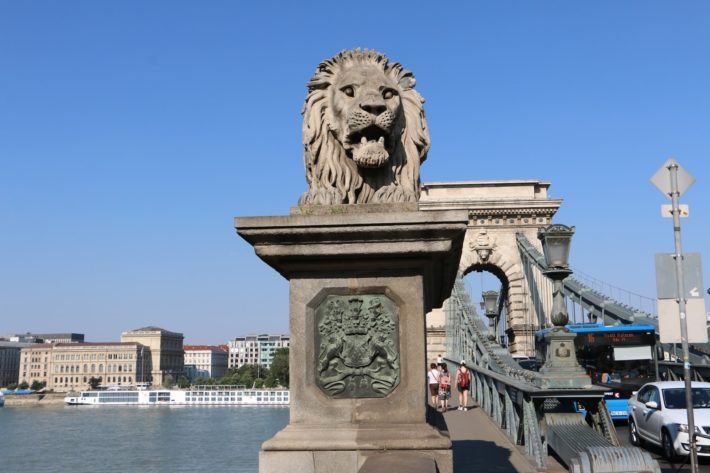
We went down Hunyadi János street towards the Széchenyi Lánchíd Bridge over the Danube River and came back to the hotel.
This beautiful bridge, used by cars and pedestrians, is one of Budapest’s postcards.
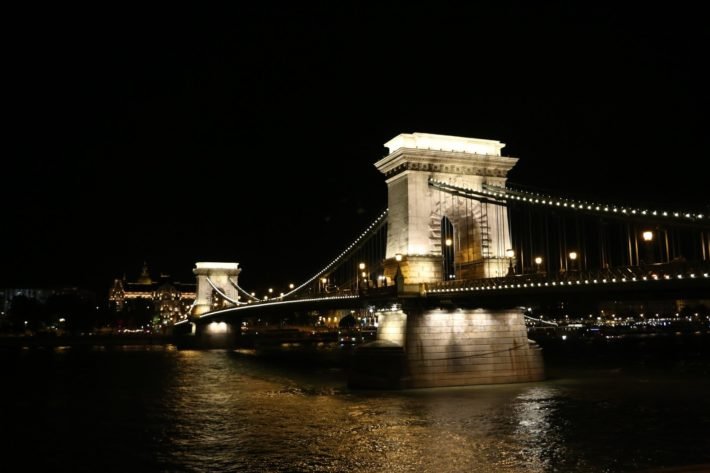
Vendetta Italian Restaurant
In the evening, we had dinner at the Italian restaurant Vendetta – Pasta e Basta, also in central Budapest (District V). I had bruschetta and spinach risotto. It was delicious, but I didn’t really like the service.
Day 3
Heroes’ Square

On the third day, we went to the Heroes’ Square area. To get there, just get off at the Hösok Tere metro station (line M1). The Heroes’ Square is located between the Museum of Fine Arts (Museum of Fine Arts) and the Art Hall.
It contains a semi-circular monument with bronze statues of 7 famous characters from Hungarian history on each side. In the center, there is a pillar with a statue of the archangel Gabriel.
City Park

Behind the square, there is an immense city park, with several attractions, including:
- a lake with pedal boats;
- the Vajdahunyad Castle, which houses the Hungarian Agriculture Museum (the largest agricultural museum in Europe);
- the Budapest Zoo;
- the thermal baths of Széchnyi;
- the transport museum.
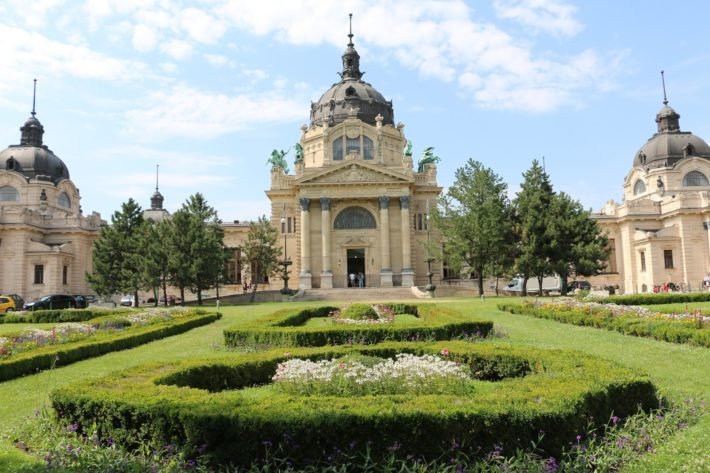
House of Terror
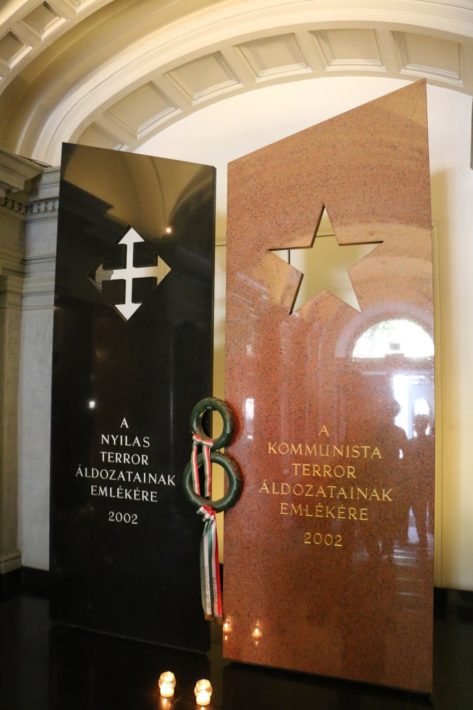
After visiting City Park, we walked to the House of Terror (Terror Háza).
The museum tells the story of Hungary’s communist regime, which has lasted since the end of World War II until the political transition in 1989. It features films, exhibitions, documents, prisoners’ cells, and equipment that reveal the repression of political dissidents by the Soviet-influenced dictatorial regime.
It is worth remembering that Hungary suffered double occupation in World War II (Nazis and Soviets), which is remembered at the museum’s entrance.
At the entrance, there is a war tank accompanied by photos of victims of the communist regime.

The ticket price is expensive (2,000 HUF). It is recommended to rent an audiovisual guide, as the museum does not have much information in English (except for some brochures that are available in each room). A negative point is that some rooms/clothes have a musty smell.
From there, we walked to the Hotel.
Kizpiac Bisztró

In the evening, we went to dinner at a typical Hungarian restaurant nearby, Kizpiac Bisztró, with excellent service and great local food. We tried the ½ grilled duck. Delicious and well priced. I recommend!
Shoes on the Danube Promenade Memorial
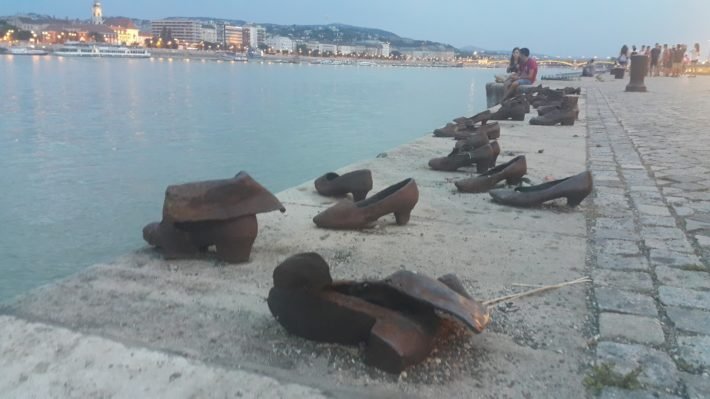
Leaving the restaurant, we made a quick trip along the banks of the Danube River, in Pest, to visit the “Shoes on the Danube” memorial (Cipők a Duna-parton), which is just a few meters from Parliament. There are 60 pairs of bronze shoes, in the style of the 1940s, that honor those who were killed by the Nazi-Hungarians.
They were forced to remove their shoes, they were machine-gunned or shot in the back of the neck and their bodies fell into the Danube River being carried away by the river current.
.
Day 4
Time to go! We took a taxi to Budapest airport, which is far from the center. It takes approximately 30 minutes without traffic. We spent 7,500 Hungarian florins.
- Tip: After 8 am in the morning, it might take at least one hour to get to the airport. Consider it and depart a little bit earlier from your hotel.
Bottom line

Budapest turned out to be a good, beautiful, and cheap city by European standards. The city has a good transport system (subway, bus, and tram) and much of the city is pedestrian-friendly (especially in the Pest region, which is flat). Contrary to what I was told, many people speak English in the city, at least, enough for basic day-to-day communication.
Three days weren’t enough to enjoy all the attractions of this incredible city. Let’s go back!
- Check out all our English Posts, click here.
